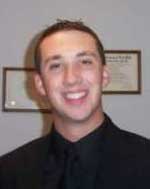There are several common problems brass players encounter in modern brass playing. In my next few articles, I hope to explore these topics and hopefully give you some tips and advice.

The biggest issue most brass players encounter is articulation. Hands down, it is the biggest obstacle I had to overcome in my own playing. It took two solid years of daily practice to achieve a clear, consistent articulation that was functional in all genres. There are three main concepts that you must remember when striving to achieve this clean, clear articulation. First, and most important, you must have a good concept of the articulation. This is achieved by listening to masters of brass playing, and challenging yourself to really listen to how they achieve their articulations.
or trumpet players I recommend listening to Allen Vizzutti or Phil Smith. Horn players, get recordings of Philip Farkas. His concept of articulation and sound is nearly unparalleled in the brass-playing world. For baritone/trombone players I recommend Joe Alessi, principal trombone of the New York Philharmonic. Tuba players, your best bet is Pat Sheridan. Each of these players has taken the time to master articulation and all of them perform pieces that require pristine articulations. Find recordings of these masters and study them. Second, strive to understand what makes a good articulation.
The best articulations are achieved by a light, fast-tongue stroke, striking just behind where your teeth and gums meet. I can’t over emphasize the “light and fast” portion of the articulation. Your tongue needs to gently separate the air stream to create a break in the sound. Many of my students often “attack” the note with a heavy and pointed tongue, making a spitting sound through their horns. Over half of the time a heavy articulation will cause a cracked or split note. The rest of the time there will often be a split second of “fuzz” at the beginning of the sound.
hile you may not think this is a big problem, imagine a symphony brass section cracking or splitting half of the notes. Or imagine your favorite horn line cracking half of their entrances. This small error multiplies its self with each member not achieving proper articulation methods. Third, after you understand how to achieve the articulation, you must, and I stress MUST, practice it daily. When I studied to change my articulation I took a lesson with Anatoly Selanin. In a thick Russian accent, he told me, “Aaron you would not have two wives at the same time, so why would you have two articulations at the same time? Stop using the
“broken” articulation, and practice good habits.”
This advice was hard to put into practice, but once I made the decision to commit to the proper way of playing, the change came easily. He gave me several exercises to practice my new articulation. The best exercise was simply to play all major and minor scales and modes in quarter notes at mm=92.
I played each scale and mode in one and two octaves where applicable. When I had a poor articulation I started that scale over, until I was able to achieve correct articulation through the entire scale. My final exam was to be able to play each scale and mode in the circle of 5ths with no errors. This was great for articulation study as well as scale and mode study. Understandably, working on your articulation method is difficult, but there is no better day that today to start working on it. As professor Selanin said, “You can’t have two wives,” and you can’t have two articulations. Best of luck and happy practicing! Next week’s article: Improving your tone week by week Aaron Evens is a brass instructor for Southwind.
Aaron Evens’ past columns: So you made it, now what?





